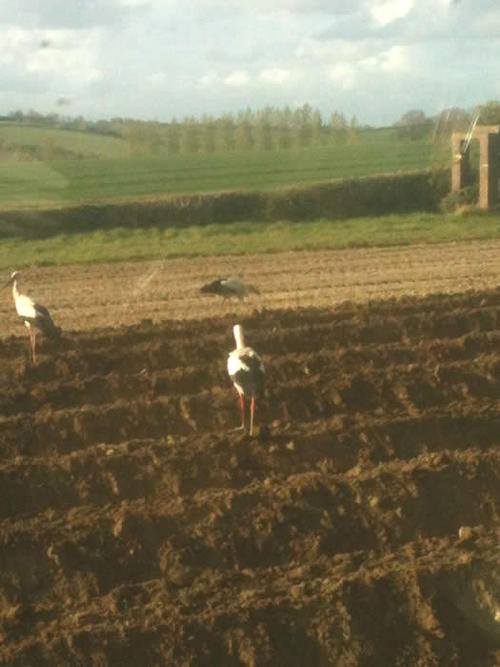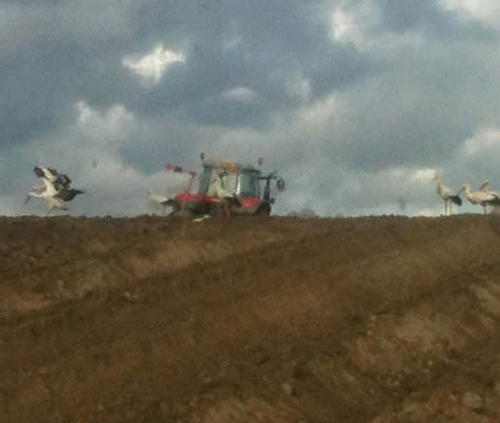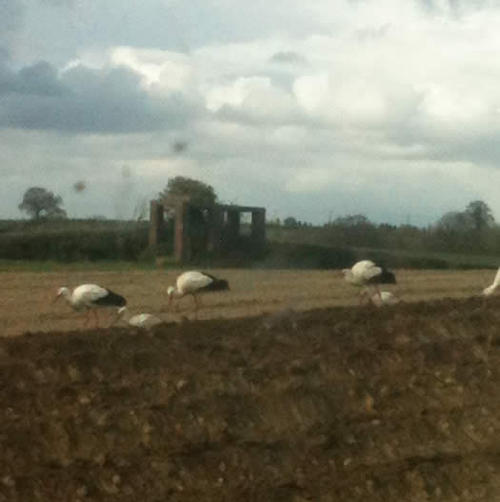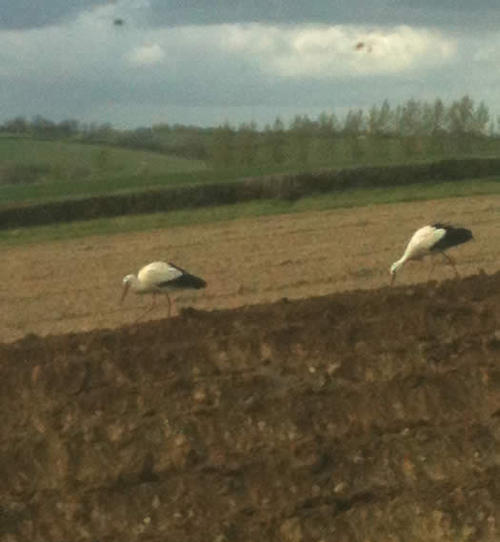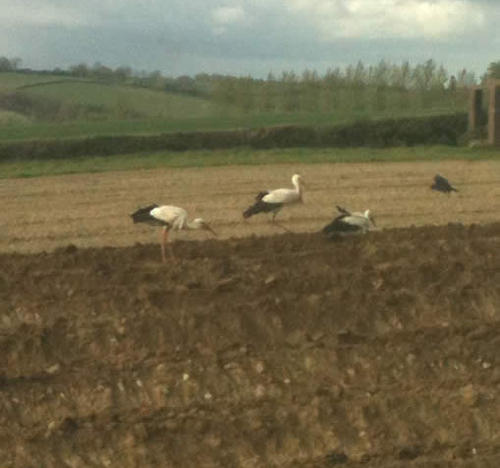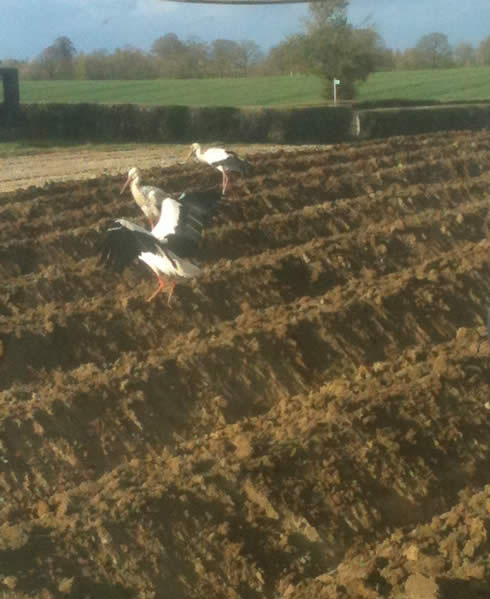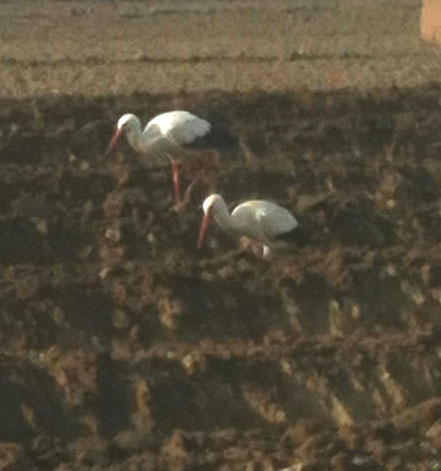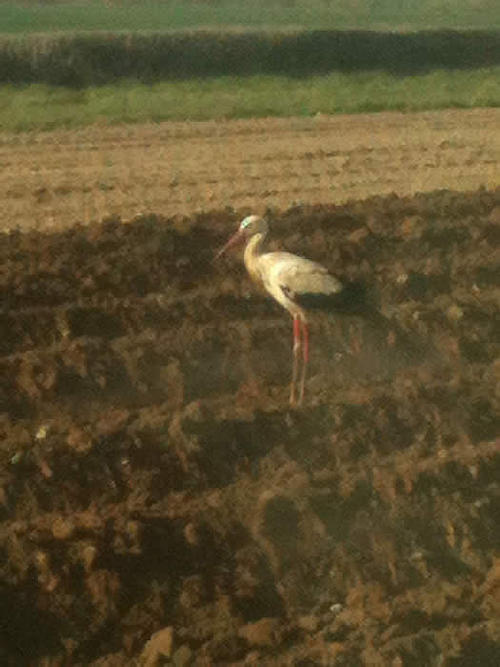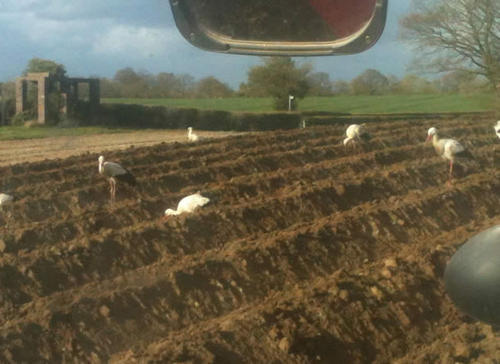Birds in Worcestershire – November 2011 to April 2012
Gavin Peplow
With the exception of a cold snap in February, this (2011-2012) has been a much milder winter than the previous two. It’s also been very dry through to April when some wet and windy weather towards the end of the period providing some relief for farmers and gardeners alike, but proved somewhat disruptive to early breeding species.
A Black-necked Grebe that spent a few days at Westwood Lake at the beginning of November was a fairly typical record whilst a Red-throated Diver on the River Severn in Bewdley attracted a lot more attention, being the first record in the County for 14 years! Passage sea-duck included a Scaup at Pirton Pool and, more exceptionally, a sub-adult drake Eider along with a Red-breasted Merganser at Clifton Pit mid month.
The highlight of several interesting Geese records, were Beans (of the Tundra race) at Bittell Reservoir and then Bredon’s Hardwick at the end of the month. Elsewhere three White-fronted Geese appeared briefly at Lower Moor, with two again at Bittell and then a Brent Goose also paid a short visit to this last location.
Other highlights included a very mobile Great White Egret at Upton Warren, three Whooper Swans briefly at Clifton Pit, Hen Harriers passing over Chase End and through Westwood and at a peak of at least six Snow Buntings on the top of Worcestershire Beacon.
The Great White Egret again briefly visited Upton Warren at the beginning of December and the Tundra Bean Goose commuted between Ripple Pit and Bredon’s Hardwick into mid month. Further Red-breasted Mergansers were seen at Westwood during the run up to Christmas, with the second of these being an adult drake. A family party of four Bewick’s Swans took up residence at Pirton Pool and remained into the New Year. Elsewhere a Black Redstart was found on Worcestershire Beacon before all the Snow Buntings had finally moved on early in the month. Seven Waxwings were seen at Hewell Grange on a single date – an atypical record in a poor winter for the species. Gull watchers found a juvenile Glaucous at Throckmorton Tip in the third week and an Iceland Gull in the Westwood roost just after Christmas, whilst a Caspian Gull was also identified there and Little Gulls were seen at Grimley and again at Throckmorton Tip. A Brent Goose on the last day of 2011 was much welcomed by all the local Upton Warren birders, being the first record there for quite a few years.
The same Glaucous Gull returned to Throckmorton on New Years day and the Great White Egret again spent a very short time at Upton Warren during the second week. Mid-winter Little Egrets are still quite uncommon, so birds at Bittell and Upton Warren were good records. There were also unseasonal records of Knot at Upton Warren and Trimpley Reservoir, though neither bird lingered long. Up to 15 Crossbills were seen at Eymore Wood whilst Hawfinch numbers peaked at 20 at Chase End Hill during the month and a Black Redstart at Hartlebury Industrial Estate was a good find.
Unseasonal waders continued to be found into February during the cold spell, with another Knot, this time at Throckmorton Tip; three Sanderling also at this location and Grey Plovers at Bittell and then Grimley. Less unusual was a Ruff at this last location, whilst a couple of Avocets reappeared very early at Upton Warren from mid month.
There was a record influx of Iceland Gulls into northern Britain in December and January and by February a few of these trickled far enough south to be found in the County. Seven or eight birds were seen, with the highest concentration being three birds at Throckmorton Tip mid month. At the same time a Kumlein’s Gull was also found here – a still not fully classified form of Iceland Gull that normally shows some darker feathering in the wings.
March was very dry with some very sunny and warm weather during the second half of the month. The most exciting species was a Yellow-browed Warbler on the northern outskirts of Worcester. Having been heard calling early one morning by the finder, it remained faithful to hedgerows and gardens in the area well into April and was reported singing towards the end of its stay.
Early returning migrants were found widely across the County, with an Osprey spending time at both Upton Warren and Bittell attracting most attention.
Iceland Gulls continued to been seen regularly in the Throckmorton Tip area whilst a count of 76 Corn Buntings at Summerfield was the highest anywhere in the County for a good number of years.
April as always was a busy time with returning summer visitors and passage migrants making for interesting birding across the County. Most exceptionally was a party of nine White Storks at Abberley, photographed by the farmer on his mobile phone from a tractor as he was planting potatoes!! This is certainly an exceptional count for anywhere in the UK and a record for at least recent times, but sadly news filtered out well after these birds had moved on!
(Comment from Mike Morris who took the phone pictures (Figs. 1 to 9.) from a tractor cab. He said that the nine storks arrived together with some landing before the rest. The tractor drivers (nine of them!), who were planting a potato crop for Paines of Great Witley, did not know what the birds were at first, before working out that they were Storks. The birds arrived at around 3.30p.m. and stayed until after 7 p.m., feeding in the deep furrows, and getting really close to the tractors. They left together in the direction of Clows Top. (Editor’s insert. with thanks to Mike Southall for collecting this information.). The images can also be seen at www.temevalleywildlife.com
Also on the ‘large bird theme’, four Common Cranes circled over Ripple Pit one afternoon in the third week as they drifted east and typically were only seen by the lucky finders.
A male Hen Harrier was well photographed as it drifted over Upper Rochford at the beginning of the month, whilst Ospreys continued to be seen at Bittell and Upton Warren, with new arrivals over Drakes Broughton, Wassell Grove and Lower Moor.
A Hoopoe was typically elusive being only seen in flight over Coney Meadows near Droitwich mid month, whilst Ring Ouzel passage was strong with parties of up to 13 birds on Bredon Hill, seven on Walton Hill and lower numbers at several other sites.
Poor weather at the end of the month persuaded a few waders to drop into our wetland sites, with highlights being a Curlew Sandpiper at Grimley, Bar-tailed Godwit at Ripple and four Whimbrel at the Longdon Marsh Reserve. Small numbers of Arctic and Black Terns, along with several Little Gulls were found and a drake Garganey at Westwood was the first of the spring.
Records compiled from reports received by Birdline Midlands. For all the latest information on birds currently within Worcestershire and the Midlands Region, call 09068-700247 (calls charged at 60p per minute).
Images
1. Storks at Abberley. Mike Morris
2. Storks at Abberley. Mike Morris
3. Storks at Abberley. Mike Morris
4. Storks at Abberley. Mike Morris
5. Storks at Abberley. Mike Morris
6. Storks at Abberley. Mike Morris
7 Storks at Abberley. Mike Morris
8. Storks at Abberley. Mike Morris
9. Storks at Abberley. Mike Morris
